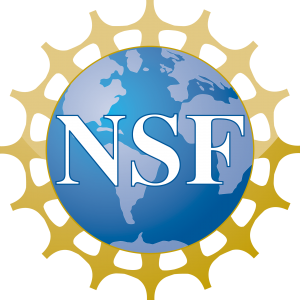 The National Science Foundation‘s Directorate for Computer and Information Science and Engineering (CISE) established the Expeditions in Computing (Expeditions) program more than a decade ago “to build on past successes and provide the CISE research and education community with the opportunity to pursue ambitious, fundamental research agendas that promise to define the future of computing and information.”
The National Science Foundation‘s Directorate for Computer and Information Science and Engineering (CISE) established the Expeditions in Computing (Expeditions) program more than a decade ago “to build on past successes and provide the CISE research and education community with the opportunity to pursue ambitious, fundamental research agendas that promise to define the future of computing and information.”
Funded at levels up to $15 million for seven years, “Expeditions projects represent some of the largest single investments currently made by the CISE directorate. Together with the Science and Technology Centers and the National Artificial Intelligence Research Institutes that CISE supports, Expeditions projects form the centerpiece of the directorate’s center-scale award portfolio.”
“For over 10 years, the Expeditions in Computing program has harnessed the vast amount of creativity in the computer science research community to expand our field’s horizons, offer societal benefits and enhance our nation’s economy,” said Margaret Martonosi, NSF Assistant Director for Computer and Information Science and Engineering. “The projects being awarded this year will undoubtedly do the same for decades to come, pushing the boundaries on challenging research problems with the potential to yield tremendous technological and societal advances.”
The three projects that were awarded this year include:
Global Pervasive Computational Epidemiology
Lead PI: Madhav Maranthe, University of Virginia.
Collaborators: Princeton University, Massachusetts Institute of Technology, Arizona State University, Indiana University, Virginia Tech, University of Maryland, Yale University, Stanford University and Center for Disease Dynamics, Economics and Policy
Infectious diseases cause more than 13 million deaths per year worldwide. Emerging trends in globalization, anti-microbial resistance, urbanization and ecological pressures have increased the risk of a global pandemic. The current coronavirus outbreak and its potential global social, health and economic implications serves as a sobering example of the problem the human race continues to face. Computation and data science can capture the complexities underlying these disease determinants and revolutionize real-time epidemiology — leading to fundamentally new ways to reduce the global burden of infectious diseases that has plagued humanity for thousands of years. This Expeditions project will enable novel implementations of global infectious disease computational epidemiology by advancing innovative computing and data science techniques. The multidisciplinary team aims to leverage tools from computational theory, artificial intelligence, machine learning and social sciences to simulate epidemics and social interactions that may control or contribute to these epidemics. The tools developed through this project could provide new analytical capabilities to decision makers, potentially improving science-based decision making for epidemic planning and response.
Interestingly, this project was chosen before the COVID-19 epidemic impacted the United States.
Understanding the World Through Code
Lead PI: Armandao Solar-Lezama, Massachusetts Institute of Technology
Collaborators: University of Pennsylvania, California Institute of Technology, Rice University, University of Texas, Austin and Stanford University
In almost every field of science, it is now possible to capture large amounts of data. This has led machine learning to play an increasingly important role in scientific discovery, for example, sifting through large amounts of data to identify interesting events. But modern machine learning techniques are less well suited for the critical tasks of devising hypotheses consistent with the data or imagining new experiments to test those hypotheses. This Expeditions award aims to develop new learning techniques that can help automate the process of generating scientific theories from data. In effect, the project team seeks to develop learning techniques that can produce models in code that look much more like the models that scientists already write by hand. The team has grounded its work in four research areas with potential for significant impact: organic chemistry, biochemistry, cognitive science and behavioral modeling, and computing systems. Machine learning is already demonstrating value in all of these domains, including predicting properties of organic compounds, recognizing complex social activities and modeling computer performance. However, the team’s techniques could have a transformative impact in all of these domains by helping scientists move from black-box predictions to a deeper understanding of the processes that give rise to the data. This project holds promise to discover the understanding of the complex processes involved in many real-world application domains that give rise to data. This deeper understanding could lead to important contributions ranging from more efficient drug discovery to improved teaching methods grounded on a better understanding of cognition.
Coherent Ising Machines (CIMs)
Lead PI: Hideo Mabuchi, Stanford University
Collaborators: Caltech, Cornell University, Universities Space Research Association
From minimizing costs to maximizing efficiency, formulating a hard problem using an optimization framework is an approach used often in computation. However, solutions to most optimization problems often take exponentially more time to solve as the problem size increases. Efficient algorithms and specialized techniques to address these challenges is therefore crucial for application domains ranging from logistics and robotics to materials engineering and drug design. This Expeditions award exploits unconventional computing architectures, called Coherent Ising Machines (CIMs), to solve a class of optimization problems. CIMs provide a platform to test ideas for computer engineering in the post-Moore’s Law era. Next-generation CIMs also hold great promise to drive substantial practical advances in artificial intelligence (AI) capabilities in multiple fields. In addition, the unconventional memory format used by these machines may establish a pathway towards novel quantum information technologies.









